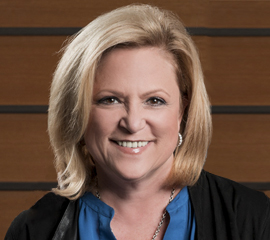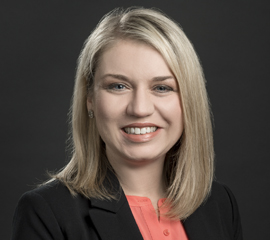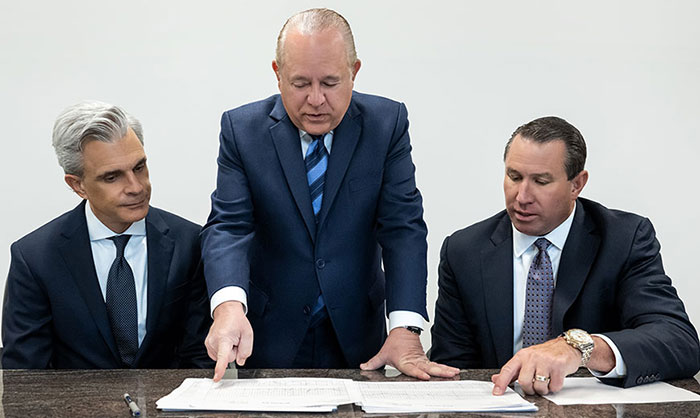What is Cephalopelvic Disproportion (CPD)?
Cephalopelvic disproportion (CPD) occurs when the size of the baby’s head is too large to fit through the maternal pelvis, resulting in an abnormal slowdown or failure of progress of labor. CPD is often diagnosed when cervix dilation has stopped or the baby has not descended through the pelvis. When CPD causes a failure to progress in labor it increases the risk of fetal distress, necessitating a cesarean delivery to avoid a birth injury.

If cephalopelvic disproportion is not accurately diagnosed and treated or there is a delay in performing an emergency c-section, it can lead to serious consequences for the baby, such as hypoxia, birth asphyxia, hypoxic-ischemic encephalopathy (HIE), and cerebral palsy.
Medical providers facing CPD should be prepared to make fast decisions based on accurate diagnosis and an assessment of the mother and baby’s risk factors. A delay of even a few minutes in making the right decision about an emergency cesarean delivery can cause permanent brain damage in a baby.
Cephalopelvic Disproportion Risk Factors
Considering the potential severity of cephalopelvic disproportion injuries and the importance of timely diagnosis for a safe c-section, the medical team must remain alert to various risk factors for CPD in order to stay well-prepared.
Narrow Pelvis

Sometimes the inferior pelvic aperture (pelvic outlet) of the expectant mother may be excessively narrow or may have an abnormal shape, posing challenges for a vaginal delivery. To determine this risk factor for CPD, the obstetrician and labor and delivery nurse should perform a thorough pelvic and physical examination to evaluate the shape and dimensions of the mother’s pelvis in addition to reviewing x-rays, and CT or MRI pelvimetry. This will allow them to determine if the mother’s birth canal can accommodate a natural (vaginal) birth.
Gestational Diabetes
In gestational diabetes mellitus, there is a high risk of the baby being larger than normal. This can cause CPD due to the baby’s size. With gestational diabetes, the mother’s insulin resistance results in a greater amount of blood glucose passing into the fetal blood circulation, this can cause “fetal macrosomia”—meaning the baby is overly large for their gestational age.
Prolonged Labor
Prolonged labor is a major cause of an emergency c-section. According to the American Pregnancy Association, labor lasting for more than 20 hours in case of first delivery and over 14 hours in case of subsequent deliveries is defined as prolonged labor. The medical provider should suspect CPD if the uterine contractions are not strong enough or labor is lasting longer than expected. CPD causes prolonged labor due to the inability of the baby to fit through the birth canal during natural labor and delivery.
Excessive Amniotic Fluid
Polyhydramnios or abnormally high levels of amniotic fluid may sometimes indicate that the baby’s size is overly large. The rationale behind this indication is that higher than average volume of amniotic fluid represents a higher fetal urine output. The larger the size of the baby, the more urine output they will produce. Polyhydramnios condition can be detected with an ultrasound exam. When Polyhydramnios is suspected, the doctors and nurses should be prepared for CPD.
Fetal Distress
Non-reassuring fetal status or fetal distress may occur during pregnancy or labor when the baby shows signs of insufficient oxygenation. Medical providers should consider fetal distress as a potential risk factor of CPD. The condition can be detected using electronic fetal heart monitoring. If fetal distress is noted, the doctors and nurses must take immediate steps to correct the heart rate or move to an emergency c-section to avoid a birth injury.
Large Fundal Height

Fundal height refers to the distance between the pubic bone and the top end of the uterus. If the fundal height is abnormally large, this is a strong indicator to the doctors and nurse of a large baby that could cause CPD.
In general, the fundal height is in proportion to the baby’s gestational age. After the 24th week of pregnancy, the fundal height (in centimeters) is expected to match the number of weeks of pregnancy for a normally growing baby.
For instance, after 28 weeks of pregnancy, the fundal height should be about 28 cm. If the fundal height is abnormally large, the medical provider should recognize the risk of CPD, order an ultrasound to determine the cause of an unusual measurement, and monitor the pregnancy more closely.
Late-Term or Post-Term Pregnancy
A pregnancy is called late-term between 41 and 42 weeks. At 42 weeks and beyond, the pregnancy is called a post-term pregnancy. Both these conditions may be seen as risk factors for cephalopelvic disproportion due to the chances of a larger baby. When the expectant mother is one week past her due date, the medical provider should perform a non-stress test along with an ultrasound to assess the baby’s heart rate, breathing, and biophysical profile. They should correlate the condition with other risk factors for CPD and make preparations for an emergency c-section should it become necessary.
Potential Cephalopelvic Disproportion Injuries
The medical team should be cognizant of the potential complications and injuries that may result from labor and delivery associated with cephalopelvic disproportion. These may include:
- Premature rupture of membranes (PROM)
- Shoulder dystocia (birth trauma resulting from the baby’s shoulder getting stuck in the maternal pelvis)
- Umbilical cord prolapsed (cord is compressed between the baby’s body and the mother’s pelvic bones)
- Fetal distress
- Maternal infection
- Traumatic head and brain injury
- Injuries related to baby’s lack of oxygen, such as HIE and cerebral palsy
Should Vaginal Delivery be Considered with CPD?

According to researchers, cephalopelvic disproportion (CPD) is the most common indication for cesarean delivery in first-time expectant mothers. Looking at the risk of fetal distress and other severe potential consequences of CPD injuries for the baby, cesarean section is generally accepted as the safest form of delivery in these cases.
Although CPD warning signs may be present throughout a large part of the pregnancy, the condition is often not diagnosed until labor and delivery begins. That may leave very little time for other treatments, and a quick decision about cesarean delivery must often be made by the medical team.
If the medical team decides to attempt a vaginal delivery (if they are unsure about the CPD diagnosis) they should remain prepared to switch to an emergency cesarean delivery if labor fails to progress. In cases where the CPD diagnosis has been confirmed prior to labor, the medical providers should schedule a cesarean section in advance.
Contraindication of Pitocin Treatment
In case of prolonged labor, the medical provider may decide to administer Pitocin (synthetic form of oxytocin) in an attempt to speed up the delivery and avoid a c-section. With that said, research shows that oxytocin should not be given when cephalopelvic disproportion is present.
In CPD, the issue is not about the strength or frequency of labor contractions. The concern is primarily about a mismatch between the size of the baby’s head and the mother’s pelvis. Therefore, attempting to induce labor through stronger and faster contractions may not help, and on the contrary, it may increase the baby’s risk of head trauma and permanent brain damage, which could have been avoided.
How is CPD Diagnosed?

To begin with, the medical provider should review the detailed health history of the expectant mother, particularly if she has had CPD in the previous children. An evaluation of the risk factors of CPD (as discussed in a previous section of this page) and correlating them with the findings of physical exams, ultrasound, pelvic exams, and monitoring of the baby’s condition throughout the pregnancy can help diagnose CPD early.
- Ultrasound: An ultrasound exam may be used to measure the baby’s size of the head and body. The measurements should be correlated with the findings of the pelvic exams to determine CPD.
- CT Pelvimetry: The diameter of the baby’s head and dimensions of the maternal pelvis can be determined using a 3D CT pelvimetry exam or even x-ray pelvimetry in some cases.
- MRI Pelvimetry: This exam may provide a more accurate assessment of the pelvic dimensions, capacity of the birth canal, baby’s position, and an evaluation of the baby and mother’s soft tissue.
- Clinical Pelvimetry: The medical provider may evaluate the pelvic size with a physical examination using their hands, or combine it with conventional x-rays, CT, or MRI based pelvimetry.
CPD & Cerebral Palsy: What does the Research Say?

An extensive research study involving cranial ultrasonography of 4,725 term-born babies found a significant correlation between the incidence of white matter damage (WMD) and large head circumference (cranium size) of the babies. Researchers pointed out that cerebral white matter damage is a major risk factor for cerebral palsy.
After evaluating the study results, researchers concluded: “The fact the seemingly healthy term-born infants are not screened by head imaging, in spite of both large head circumference and prolonged labor, is considered to be the missing link between the insult that escapes diagnosis and the development of unexplained development delay and cerebral palsy in childhood.”
This study was published in the prestigious Obstetrics and Gynecology International journal in 2018. Study results showed that in babies delivered with cephalopelvic disproportion (CPD) who had a vaginal delivery, MRI imaging or cranial ultrasound should be used after birth to determine if cerebral white matter damage may have occurred regardless of any immediate signs of injury.
These imaging results in babies with CPD may potentially offer an opportunity to make timely medical interventions. (Note: According to researchers at the Center for Neuroscience Research at Children’s National Health System, if a therapeutic intervention is made within a week after the WMD injury to the baby, the damage may be reversed or mitigated.)
It is well-established that prolonged or obstructed labor itself is a risk factor for white matter damage and cerebral palsy because the resulting mechanical forces can cause excessive compression or molding in the baby’s head. This risk increases in those babies that have a large head size or CPD.
Is Your Child’s Cephalopelvic Disproportion (CPD) Related Complication the Result of Medical Malpractice?
Parents whose children suffer a birth injury from cephalopelvic disproportion or CPD related complications deserve answers as to how their child suffered this injury and whether the consequences resulting from it were preventable.
- Were there signs during the pregnancy, labor, and delivery process that CPD or its related complications were occurring, but accurate diagnosis, correct treatment, or an emergency c-section was either delayed or not performed at all leading to birth injuries?
- Was a neonatal resuscitation team not called to delivery in a timely manner to address breathing difficulties following a birth that was complicated by CPD?
- Were signs of fetal distress due to CPD not recognized and responded to in a timely manner?
- Should hypothermia therapy have been provided, but the doctors and nurses failed to perform the appropriate tests or ignored the results of the tests?
Our dedicated birth injury lawyers can help you find these answers and a monetary settlement that will help provide specialized medical treatment and services that can help improve the quality of your child’s life. A birth injury settlement can improve the quality of life for your child.
If your child has been diagnosed with a CPD birth injury (including Hypoxic-Ischemic Encephalopathy (HIE) or cerebral palsy), and you believe this may have been caused in part by medical errors, Miller Weisbrod Olesky will thoroughly investigate the circumstances of your case and hold responsible doctors, nurses and hospitals responsible by prosecuting a medical malpractice claim against them. The recoveries our clients receive helps them pay for their child’s current and future medical care, therapy, and specialized treatment to help their child cope while living with a permanent disability, and to be able to pay for cutting-edge devices that increase a child’s quality of life.
Sometimes families are reluctant to contact a medical malpractice lawyer. It’s also not uncommon for parents to feel overwhelmed by their circumstances and worried that they will not be able to assist in a lawsuit involving their child’s birth injury.
Registered Nurses and Nurse-Attorneys Are a Vital Part of Our Birth Injury Team…and Yours

Most national birth injury law firms will employ one or two nurses to assist the review of cases and medical research. But Miller Weisbrod Olesky offers an unmatched number of nurses and nurse-attorney employees support to both the birth injury attorneys and our clients.
Our team of registered nursing staff and nurse-attorneys bring a deep level of medical and personal insight to every client’s case. Our nursing team includes both an experienced labor and delivery nurse as well as an ICU nurse. Working closely with the rest of the team, they investigate the reasons behind a birth injury and how medical professionals breached their standard of care.
Meet our Legal Nursing Team
Linda Chalk

As a registered nurse, Linda practiced ICU nursing for 44 years while caring for a wide range of patient conditions. She has worked closely with founding partner Les Weisbrod for over 30 years, investigating and pursuing birth injury cases.
Along with DJ Weisbrod, Linda heads up the firm’s birth injury intake, screening, and medical literature research team. She personally screens all potential cases to ensure that medical issues have been addressed before we file lawsuits on behalf of birth-injured children and their families.
DJ Weisbrod

Before joining Miller Weisbrod, DJ practiced as a surgical nurse in various hospital and operative settings. She has been with the firm over 30 years.
DJ directs Miller Weisbrod’s birth injury intake and medical screening team. She has also served as firm founder Les Weisbrod’s trial nurse for all cases involving medical negligence and birth injury.
Linda Cuaderes

Linda Cuaderes is both a registered nurse and a licensed lawyer. Linda works exclusively in Miller Weisbrod’s Birth Injury and Medical Malpractice section. Linda acts as the firm’s patient advocate and liaison with our young clients and their parents.
Linda combines her legal and nursing experience along with her exceptional organizational talent and attention to detail to make sure each child we represent is provided the highest level of medical care and attendant care during the pendency of their case. Linda communicates with our parent clients regularly to monitor their birth injured child’s treatment, provide guidance as to additional care and therapies and when necessary assist them in obtaining specialized medical providers.
Linda was raised in Bartlesville, Oklahoma and completed her Bachelor of Science in Nursing with Honors at the University of Oklahoma. She started as an Oncology Nurse at Presbyterian Hospital in Oklahoma City, quickly becoming the Assistant Head Nurse of the Outpatient Endoscopy Unit. Linda then entered the University of Oklahoma College of Law.
Following graduation, Linda joined Les Weisbrod in the Medical Malpractice Section. After taking time off to raise her three lovely children, Linda returned to Miller Weisbrod and her passion of holding healthcare providers accountable for preventable errors. Linda is active in the American Association for Justice, Texas Trial Lawyers Association, Dallas Trial Lawyers Association, and the Texas Bar Association. Linda is an active member of the Birth Trauma Litigation Group and Medical Negligence Section of the American Association for Justice.
She is admitted to practice before the Texas Supreme Court and routinely works on cases pending throughout the United States. Linda has worked with child victims of birth injury, their parents and other victims of medical malpractice in Texas, New Mexico, Oklahoma, Arkansas, Louisiana, Iowa, Ohio, New York, Alabama, Georgia, Arizona, Utah and Missouri.
Education
- University of Oklahoma - School of Law, 1990, J.D. - Norman, Oklahoma
- University of Oklahoma - School of Nursing, 1985 - Norman, Oklahoma
Areas of Practice
- Birth Injury/Birth Trauma
- Medical Malpractice
Associations & Memberships
- Texas Bar Association
- American Association of Justice
- Texas Trial Lawyers Association
- Dallas Trial Lawyers Association
Kristin Jones

Kristin combines her medical and legal training to provide invaluable, passionate service to parents struggling to care for their birth-injured children.
Families often have questions as they go through the birth injury lawsuit process. Kristin diligently identifies and investigates all medical issues so the birth injury attorneys at Miller Weisbrod can answer those questions Kristin ensures that our birth injured children’s medical records are thoroughly reviewed and organized. Miller Weisbrod’s birth trauma litigation attorneys and medical experts retained by the firm need her services while pursuing justice for our clients.
Kelly Kunkel

Kelly Kunkel was born and raised in Dallas, Texas. She has 15 years’ experience in hospital based High Risk Obstetrics and Labor and Delivery bedside nursing care. Kelly graduated with an Associate’s Degree in Nursing from El Centro College in December of 1990 and received her Bachelor’s Degree in Nursing from West Texas A & M University in 2008; graduating with honors.
In addition, Kelly has over 25 years’ experience in medical malpractice case management and litigation and has worked with David Olesky for over 22 years. After many years of assisting in defending healthcare providers and hospital systems in medical malpractice cases involving complex litigation matters related to birth injury, catastrophic injury and death, Kelly has proudly joined David Olesky in the national birth injury and medical negligence practice at Miller Weisbrod Olesky.
Why Should You Talk with the Knowledgeable Attorneys at Miller Weisbrod Olesky?

The only way to find out if you have a birth injury case is to talk to a lawyer experienced in birth injury lawsuits. It is not uncommon that a CPD related complication result in a preventable birth injury including cerebral palsy, but it takes a detailed expert review by a birth injury attorney of the medical records from your child’s birth to determine if the birth injury was the result of medical malpractice.
At Miller Weisbrod Olesky, a team of committed lawyers, nurses and paraprofessionals uses our detailed medical negligence case review process to assess your child’s potential birth injury case. We start by learning more about you and your child and the status of meeting/missing developmental milestones. Then we gather medical records to determine what happened before, during, and after your delivery. We call in skilled medical experts who review your records and let us know if they think medical errors could have caused your child’s injuries.
If we feel medical negligence caused or contributed to your child’s injuries, we meet with you to discuss how you can receive compensation from the medical professionals who made the errors. Our birth injury attorneys have recovered millions of dollars in settlements for families of babies that have suffered a birth injury.
At no point in our legal intake process will we ask you to pay anything. The medical review of your case and the consultation are free. We only receive payment when you do.
